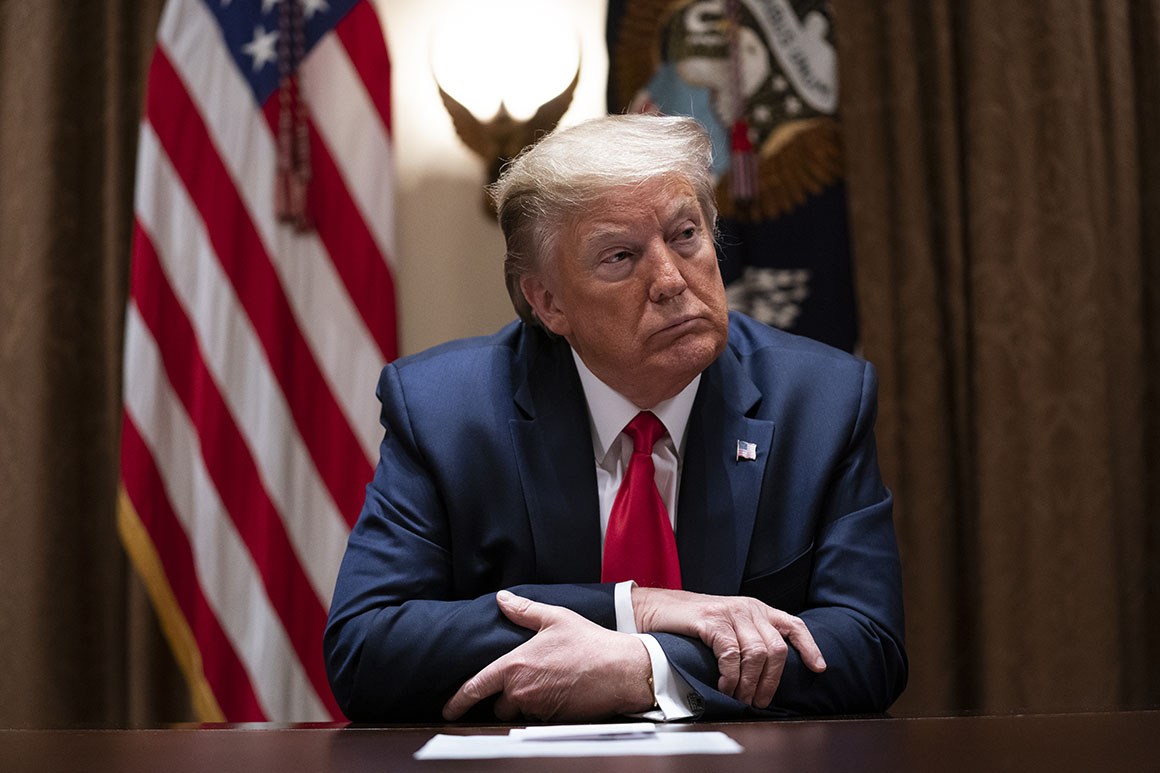
While Trump’s allies acknowledge the vast spending increase, they also maintain that the administration has used the coronavirus crisis as an opening to push through some long-sought deregulatory actions. Those include a sweeping expansion of Medicare coverage for telehealth services — backed by policy experts in both parties — that makes it easier for people to get care virtually or over the phone, and a broad loosening of regulations that previously prevented physicians from practicing across state lines or restricted the types of care nurses and physician assistants could provide.
“We’ve expanded it dramatically,” the senior administration official said of the broader telehealth coverage, predicting it would ultimately prove difficult to rescind. “It’s one of those things that once we get the hell out of the way, the marketplace will take off.”
Trump notably has also yet to abandon one mainstay of his health agenda: Ardent opposition to Obamacare, which he’s still seeking to eliminate through a lawsuit filed by several GOP-led states.
“What we want to do is terminate it,” Trump said in March.
The White House subsequently opted against reopening Obamacare’s insurance marketplaces as jobless numbers grew and the virus spread. Yet that has only forced the administration to create a brand-new program to cover the cost of treating uninsured coronavirus patients.
It’s a concept that both Republicans and Democrats alike note is essentially a narrow single-payer system, with the federal government directly paying hospitals for care.
“One could look at the plan as kind of a skinny Medicare for all who have Covid-19,” Levitt said, adding that it’s “certainly ironic given the criticism of ‘Medicare for All’ from President Trump and other administration officials.”
The senior administration official disputed that characterization, calling it needed compensation for hospitals on the condition they won’t stick patients with “surprise” medical bills — and noted that there are already concerns the federal funding will be insufficient.
“They’re already complaining it’s not enough, so there’s no way to run the whole system on single payer,” the official said. “If anything, it’s going to show that single payer doesn’t really work, but I’m happy that people who are uninsured are going to be able to go get the care they need.”
Still, the run of free spending has dismayed some conservatives, who say the rush to expand government by the administration and congressional Republicans has been jarring – even if necessary in some cases in response to a fast-developing crisis.
The Trump era had already undermined efforts to arrest federal spending, with the deficit on track to surpass $1 trillion even before the outbreak. But the coronavirus fight opened up additional hefty funding streams that will be hard to cut off, especially as the threat of the disease lingers for months.
“When this crisis is over, that funding needs to be pulled back,” said Jason Pye, the vice president of legislative affairs for the conservative advocacy group FreedomWorks. “We’re putting ourselves in a very awkward position.”
Perhaps more significantly, the period could elevate the parts of the health care industry that Trump’s populist rhetoric has targeted for years. Ambitious efforts to shed light on hospitals’ opaque prices have been overshadowed by their crucial role as first responders. And a centerpiece pledge to crack down on the pharmaceutical industry over soaring drug costs remains unfulfilled, as the administration relies on it to develop the treatments that could lead the way out of the nation’s weeks-long halt.
“These are the new heroes,” Miller said. “In the near term, we’ll lionize them.”
The Trump administration is drawing a different lesson from the last several weeks, the senior administration official said, emphasizing the distinction between encouraging companies working to help improve the nation’s health system and cracking down on those trying to take advantage of it.
“I’m much more comfortable with where we are on drug pricing“ than a Democratic Party that’s sought to rein in the entire industry, the official said, calling Trump’s stance a combination of „pro innovation and trying to take out bad incentives.“
To critics of the administration, though, the scramble to bulk up federal programs in response to the pandemic is just the latest example of a health agenda defined less by concrete policy goals than the president’s ever-changing political instincts.
Trump is still trying to wipe out Obamacare even as he relies on its sweeping architecture of health benefits and programs, said Linda Blumberg, a fellow in the Health Policy Center at the nonpartisan Urban Institute. He’s refused to reopen private insurance enrollment, in favor of having the government directly fund care. And as Trump speeds toward November, he’s increasingly caught between the health care vision he’d planned to run on — and the one that’s needed now.
“He really is acting out of two different objectives that are working against each other,” Blumberg said, referring to the policy goal of reining in health care spending and the political necessity of expanding it. “You can’t square it.”
Source: politico.com
See more here: news365.stream






